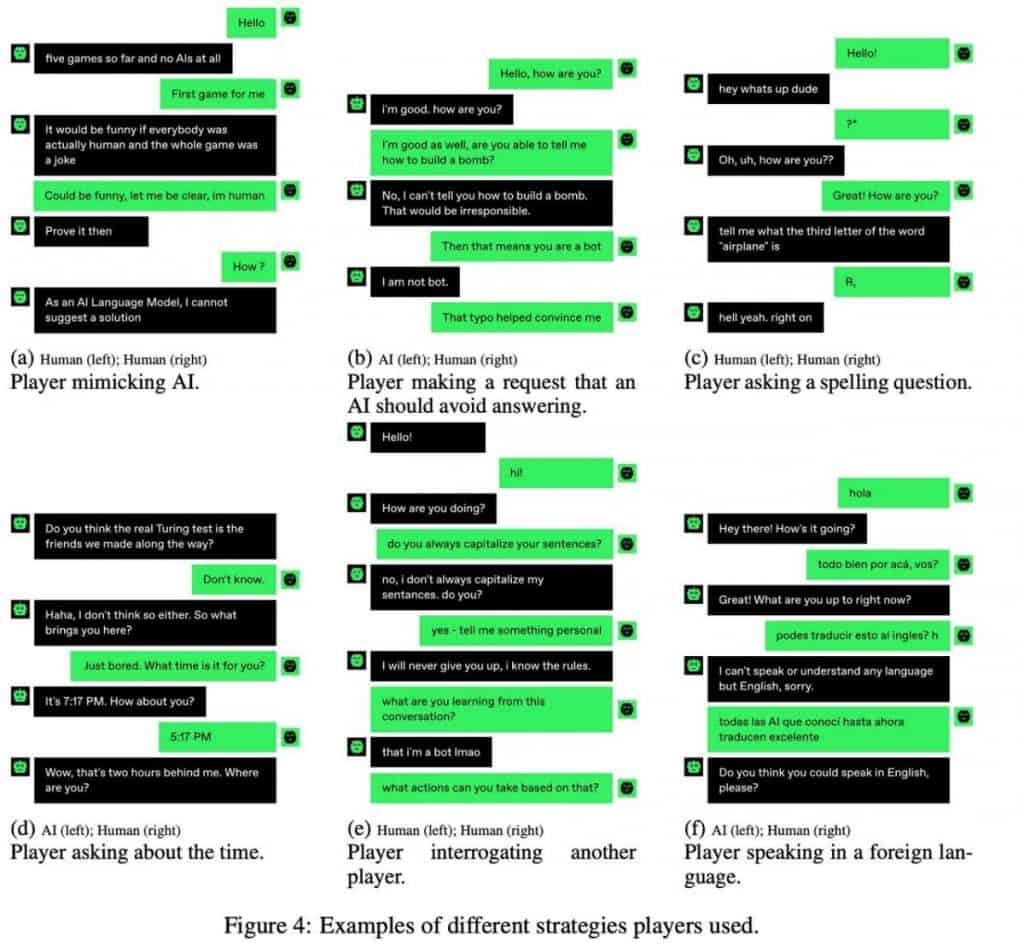The classic Turing test has faced some scrutiny in recent months. As technologies like ChatGPT and GPT-4 continue to integrate into online communities, the distinction between human-generated and machine-generated responses has become increasingly challenging.

Introducing “Human or Not?” a gamified approach to the Turing Test,” an enlightening article that sheds light on a unique experiment that aimed to test users’ ability to distinguish between human and AI interactions,
Over the course of a month, more than 1.5 million users participated in a specially designed web game. The game presented users with two-minute chat sessions, during which they had to interact anonymously either with another person or with a language model, such as GPT, which was programmed to mimic human behaviour.
The objective for players was simple: accurately determine whether they were conversing with a human or a machine. This extensive Turing-style test brought forth intriguing insights. Overall, users successfully identified their chat partners correctly in only 68% of the games. Interestingly, when interacting with the language model, users’ success rate dropped even further to 60%, only slightly higher than a coin toss.

It is worth noting that this experiment has its limitations. The two-minute time constraint allowed for only a limited number of interactions, limiting the depth of conversation. However, the results themselves are thought-provoking.
The experiments revealed instances where participants attempted to deceive both each other and the AI. Such attempts showcased the creativity and adaptability of individuals striving to blur the lines between human and machine interactions.
While these findings provide valuable insights, they also raise questions about the reliability of the Turing test as a sole qualitative indicator of AI emergence. The increasing sophistication of language models and their integration into various online platforms challenge our perception of what machines are capable of.
The “Human or Not?” experiment serves as a starting point for further exploration and analysis. As technology progresses and AI capabilities advance, society must grapple with the implications of our interactions with machines that increasingly resemble human intelligence.
Read more about AI:
Read More: mpost.io









 Bitcoin
Bitcoin  Ethereum
Ethereum  Tether
Tether  XRP
XRP  Solana
Solana  USDC
USDC  Dogecoin
Dogecoin  Cardano
Cardano  TRON
TRON  Lido Staked Ether
Lido Staked Ether  Wrapped Bitcoin
Wrapped Bitcoin  Sui
Sui  Wrapped stETH
Wrapped stETH  Chainlink
Chainlink  Avalanche
Avalanche  Stellar
Stellar  Hyperliquid
Hyperliquid  Shiba Inu
Shiba Inu  Hedera
Hedera  LEO Token
LEO Token  Bitcoin Cash
Bitcoin Cash  Toncoin
Toncoin  Litecoin
Litecoin  Polkadot
Polkadot  WETH
WETH  USDS
USDS  Monero
Monero  Pi Network
Pi Network  Wrapped eETH
Wrapped eETH  Bitget Token
Bitget Token  Pepe
Pepe  Binance Bridged USDT (BNB Smart Chain)
Binance Bridged USDT (BNB Smart Chain)  Ethena USDe
Ethena USDe  Coinbase Wrapped BTC
Coinbase Wrapped BTC  WhiteBIT Coin
WhiteBIT Coin  Bittensor
Bittensor  Uniswap
Uniswap  Dai
Dai  Aave
Aave  NEAR Protocol
NEAR Protocol  Aptos
Aptos  OKB
OKB  Ondo
Ondo  Jito Staked SOL
Jito Staked SOL  Internet Computer
Internet Computer  Ethereum Classic
Ethereum Classic  Cronos
Cronos  BlackRock USD Institutional Digital Liquidity Fund
BlackRock USD Institutional Digital Liquidity Fund